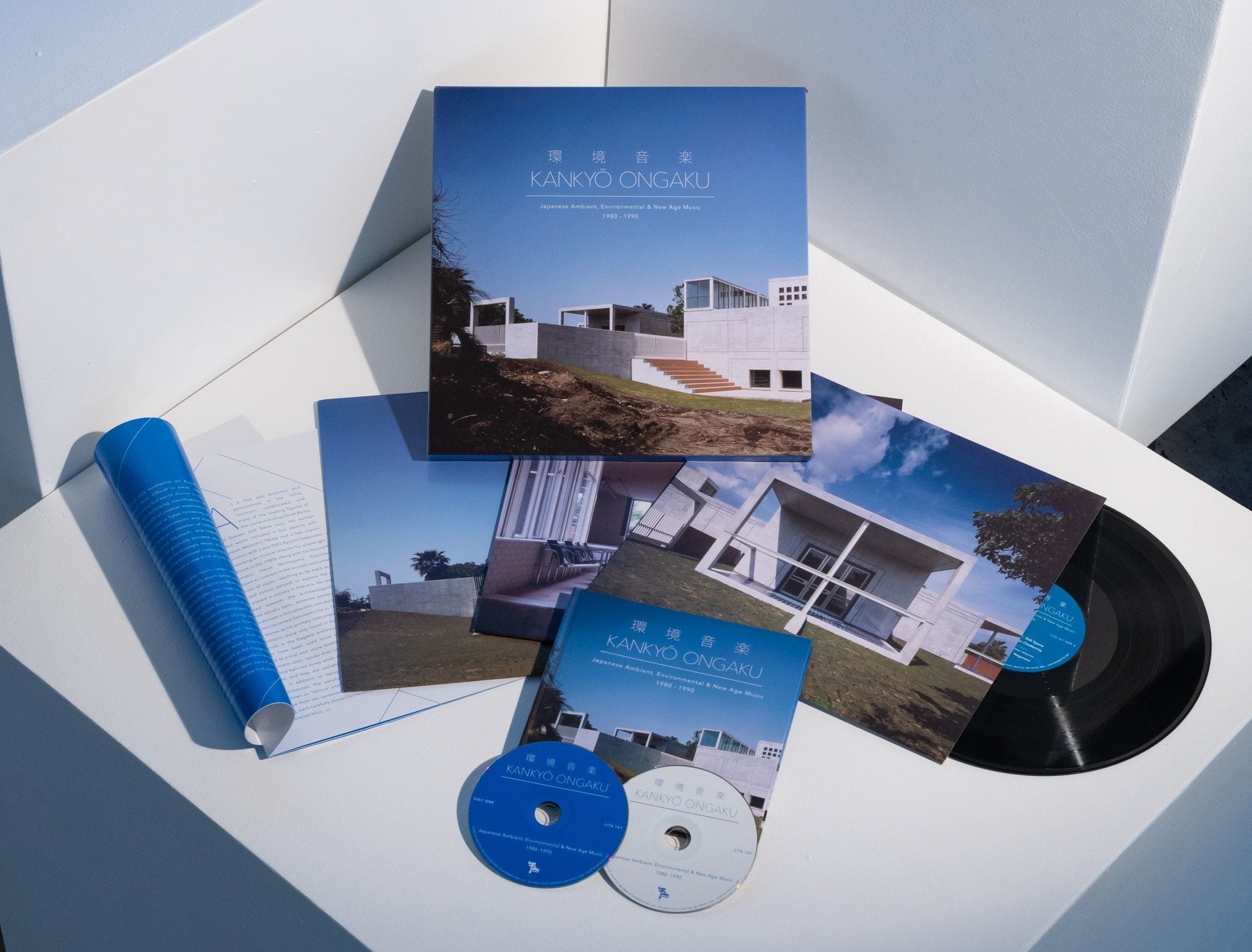
You’ve got to hand it to Light in the Attic. The Seattle-based independent record label known for its roster of reissue projects and distribution catalog seems practically hell-bent on filling in the blanks across an endless variety of genres to make sure that if there’s something good out there that needs to be reissued, they’re on top of it. Everything from reissues of the Last Poets and Serge Gainsbourg to an obscure mid-’60s surf-rock project by Lee Hazlewood has been released under their watch, with no signs of slowing down.
Which brings us to one of their latest offerings. Kankyo Ongaku: Japenese Ambient, Environmental & New Age Music 1980-1990 certainly fills a niche, and whether or not it’s something music consumers have been clamoring for, it’s clear from the sheer volume of the set – 25 songs spread across two CDs or three records – there is plenty of material available. And it’s all pretty fantastic.
Kankyo Ongaku – which literally means “environmental music” in Japanese – was compiled by Spencer Doran of Portland-based electronic duo Visible Cloaks. As part of the lush booklet that accompanies the set, Doran’s essay on Japanese environmental music describes how the music came out of an appreciation among Japanese musicians in the ’70s of the ambient music of Brian Eno as well as the esoteric work of French composer Erik Satie (whose “furniture music” created something of a “quiet boom” in Japan). “Furniture music” is meant to imply music made to intermingle with the sounds and environments of everyday life.
With Japan’s economic bubble in the 1980s, musicians began to create soundscapes that catered to a sophisticated lifestyle, further advancing the concept of kankyo ongaku. As a result, artists like Satoshi Ashikawa, Yoshio Ojima, and Haruomi Hosono thrived within this genre and are among the many artists represented here. It’s important to note that Hosono’s pioneering band Yellow Magic Orchestra also appears in this set. Also important is the fact that none of this music has been made commercially available outside of Japan.
As expected, the music on Kankyo Ongaku provides a primarily relaxing ambient atmosphere. Ashikawa’s “Still Space” is not only sparse and lush, but it also avoids many of the pitfalls of the overprocessed sounds of the 1980s, employing a relatively organic touch reminiscent of Eno’s early ambient recordings. There’s also a playful feel to songs like Yoshiaki Ochi’s “Ear Dreamin'”, which includes buoyant percussion among the synths.
A refreshing human element can be found on songs like Interior’s “Park”, where a relentless finger snap runs through the dreamy atmosphere, as if a fellow listener is right beside you, keeping time. That kind of repetitious syncopation is also evident on Yasuaki Shimizu’s “Seiko 3”, a mere sliver of an interlude that includes an almost maddeningly repetitious keyboard riff over a twinkling waterfall of synthesizers. But it’s oddly cut off at just over one minute, making way for the bright futurism of “Apple Star” by Inoyama Land.
The aforementioned Japanese obsession with Satie materializes in Hiroshi Yoshimura’s “Blink”, where a bright electric piano offers some jazzy variations on the famed French composer. That kind of scattered semi-improvisation can also be found on “Loom”, the Yellow Magic Orchestra contribution to the set. Lazy piano notes are spread across the track while a lush synthesizer ebbs and flows underneath.
The environmental side of environmental music is most evident on sober, deeply moving tracks like “Variation III” by Masashi Kitamura + Photogenix and “Praying For Mother / Earth Part 1” by Akira Ito. On the former, lapping waves are present throughout the song while a gentle keyboard bed accompanies sparse, organic percussion thumps, creating a unique atmosphere that keenly blends seemingly anomalous sounds. On the latter, a babbling brook is the natural, ambient bed underneath rich, sedate synth chords, eventually accompanied by bird sounds.
Kankyo Ongaku may seem at first to be a very narrow genre from which to gather more than two dozen tracks, but as the set bears out, this is an era and genre rich with sonic delights and a surprising amount of variety. The collection is a warm, poignant, deeply immersive set that is sure to please fans of the genre but quite honestly belongs in every home. It’s that beautiful.

